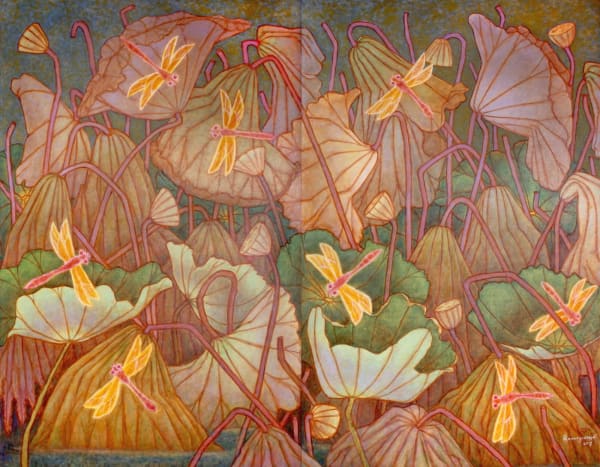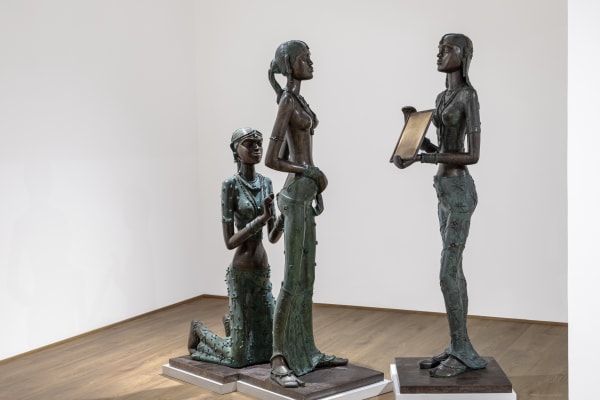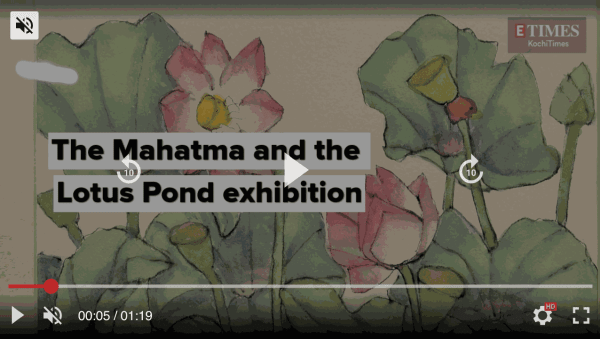A. Ramachandran Indian, 1935-2024
Born in 1935 in Attingal, Kerala, A. Ramachandran graduated with a degree in Malayalam literature from Kerala University before pursuing a diploma in fine arts and crafts from Kala Bhavan, Visva University, at Santiniketan.
Deeply influenced by Indian classical art and Nandalal Bose in particular, Ramachandran was a master of Indian aesthetics by painting archetypal Indian imagery and socio-political symbols in a modernist vein. As a student at Kala Bhavan in Santiniketan, Ramachandran studied art under masters like Ramkinkar Baij and Benodebehari Mukherjee. The cultural and intellectual milieu of Santiniketan drew him closer to the art traditions of India and other eastern civilizations, and it is here that he began his lifelong research on the mural painting tradition of temples in Kerala. Ramachandran initially painted in an expressionistic style that reflected the angst of urban life, particularly the suffering he saw when visiting the city of Kolkata, but by the 1980s his style underwent a vital change. From urban reality, he shifted his focus towards tribal community life, especially the tribes from Rajasthan, whose lives and culture gripped his imagination. Decorative elements, dramatic ambiences and myths have become an integral part of his work along with his powerful line and a greater understanding of colour and form.
A recipient of the Padma Bhushan in 2005, Ramachandran has several other prestigious awards to his credit, including the Raja Ravi Verma Puruskar in 2003 and the National Award for painting in both 1973 and 1969.
He has been exhibited at important institutions, including Lalit Kala Akademi, Kochi (2019); Kiran Nadar Museum of Art, New Delhi (2018); the Cleveland Museum of Art, USA (2017); National Museum of Modern and Contemporary Art, Seoul (2013); the Art Museum of Seoul National University (2008); the Singapore Museum of Art (2007); National Gallery of Modern Art, New Delhi (2004); the Museum of Modern Art, Tokyo (1970); and Kyoto Municipal Museum (1970), among others. He has also participated in several solo shows, including Vadehra Art Gallery, New Delhi (2015, 2013); Lalit Kala Akademi, New Delhi and Kochi (2014); Grosvenor Vadehra, London (2008); Guild Art Gallery, Mumbai and New York (2007–08); and Nami Island, Korea (2005), to name a few. Important retrospective exhibitions of his work have been organized by Vadehra Art Gallery in 2004, as well as the National Gallery of Modern Art (NGMA), New Delhi, in 2003; Kumar Gallery at Art Heritage, New Delhi, and Jehangir Art Gallery, Mumbai, in 1983.
Equally proficient with large-scale murals as with intimate miniatures, Ramachandran’s contribution to public art in India is highly celebrated. His rock sculpture at Sriperumbathoor is possibly the largest commission of public art in modern India. In 1986, he was invited to Japan as one of the keynote speakers at the 20th Congress of International Board on Books for Young People, Tokyo, and the International Symposium of the Japanese Board on Books for Young People, Oita. In 1996, he participated in a workshop campaign for literacy and illustrations in Papua New Guinea as part of an international team of experts for UNESCO. Ramachandran also has several books to his credit, including Hanuman, which was acquired by the Kijo Picture Book Village, Miyazaki, Japan,; Golden City, published by Sanyu-Sha, Japan; six children’s books along with his wife, Chameli, published by Thomson Press, India; as well as illustrated forty books for children written by Malayalam writers, among other notable publications.
The artist passed away in New Delhi in 2024.
-

Ramachandran: A Retrospective of Sculptures
Shridharani Gallery, Triveni Kala Sangam, New Delhi 17 - 31 October 2023Known for his monumental canvases, colourful oils and watercolours, not much has been seen of the large body of sculptures Ramachandran has created in his long career of art practice...Read more -

Ramachandran | A Retrospective of Sculptures
D-40 Defence Colony, New Delhi 17 October - 12 December 2023Known for his monumental canvases, colourful oils and watercolours, not much has been seen of the large body of sculptures Ramachandran has created in his long career of art practice...Read more -

A. Ramachandran | Subaltern Nayika and Lotus Pond
D-40 Defence Colony, New Delhi 15 November - 12 December 2021A painter of nature is not only de ned by his distinct way of looking but also by his distinct way of transcribing what he sees. It allows an artist...Read more -

A. Ramachandran | Subaltern Nayika and Lotus Pond
Shridharani Gallery, Triveni Kala Sangam 14 - 30 November 2021A painter of nature is not only defined by his distinct way of looking but also by his distinct way of transcribing what he sees. It allows an artist like...Read more -

A. RAMACHANDRAN | A Lifetime Of Lines
D-40 Defence Colony, New Delhi 21 July - 13 August 2021Deeply influenced by Indian classical art and Nandalal Bose in particular, Ramachandran is a master of Indian aesthetics by painting archetypal Indian imagery and socio-political symbols in a modernist vein....Read more -

A. RAMACHANDRAN | The Changing Moods of Lotus Pond and Insignificant Incarnations
D-40 Defence Colony, New Delhi 13 November - 2 December 2018Read more -

A. Ramachandran | Earthen Pot: Image Poems 2016
D-40 Defence Colony, New Delhi 21 April - 15 July 2016‘Earthen Pot - Image Poems 2016’ is an exhibition of twenty-one drawings by artist A Ramachandran. The works were made in North America, on one of the artist’s visits to...Read more -

A. Ramachandran | Ekalinji Fantasy
Lalit Kala Academi, New Delhi 12 - 25 November 2014Read more
-

INDIA ART FAIR 2023
NSIC Exhibition Grounds, Okhla, New Delhi 9 - 12 February 2023With a diverse roster of artists across conditioning, intention, practice and cultural attitudes – including A. Ramachandran, Anju Dodiya, Atul Dodiya, Balkrishna Doshi, Biraaj Dodiya,...Read more -
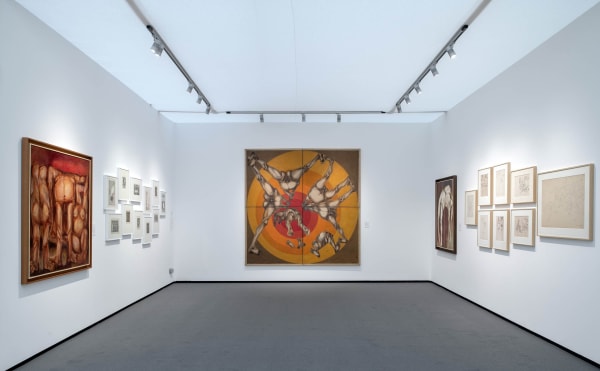
Frieze Masters 2021: Spotlight
A. Ramachandran: A Victorious Storm 13 - 17 October 2021A Victorious Storm: Early Works by A. Ramachandran highlights important works from Ramachandran’s early years before his artistic style underwent an iconic change, and is...Read more -
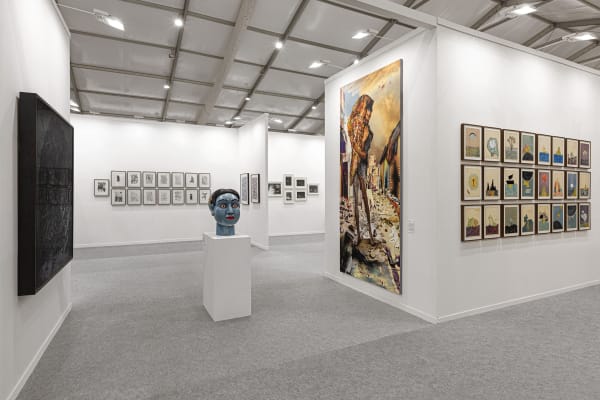
India Art Fair 2020
30 January - 2 February 2020Read more -
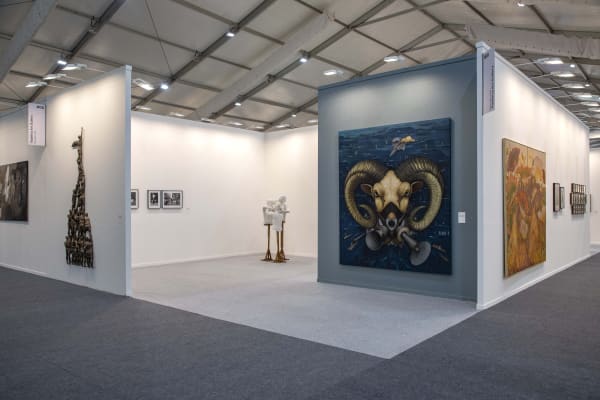
India Art Fair 2019
31 January - 3 February 2019Read more
-

He wore his craft with grace and humility
The Hindu | By Uma Nair 11 February 2024Known for translating the poetics of nature into a distinct language of realism rooted in Indian ethos, Achuthan Ramachandran Nair, 89, passed away on Saturday...Read more -

Muralist Ramachandran returns to his roots
By Anna Mathews | The Hindu 10 October 2019Have you seen a lotus pond in various moods? It is unlikely you would have appreciated the beauty of a dying lotus pond or a...Read more -

Artistic tribute to Gandhiji
The Indian Express 7 October 2019“I had two choices. Either to be a musician or a painter. I had studied classical music but I found it to be limiting. Now...Read more -

Lotus, Bhils and pure art
By Krutika Behrawala | The Hindu 17 May 2019If you visit the National Gallery of Modern Art (NGMA) in Fort, you’ll find large painted murals on canvas sharing space with sculptures, etchings, drawings...Read more -

Flowers, snails and everything nice: 50 years of A Ramachandran’s art
By Natasha Rego | Hindustan Times 27 April 2019If you’ve seen A Ramachandran’s work, you’ll know it’s larger than life, colourful, a celebration of nature, almost whimsical, and often features the artist’s comical...Read more -

A. Ramachandran's Mumbai art retrospective from April 26
Business Standard 24 April 2019One of the most collected Indian artists, 1935-born A. Ramachandran is known for two distinct styles of work during his over five decades of artistic...Read more -

A Ramachandran: ‘I am an artist who paints by the acre’
By Rosalyn D'Mello | Open Magazine 9 January 2019LUMINOUS SHADES of tangerine, mossy green and sunlight yellow seem to leap out at me from a large canvas that occupies centrestage in A Ramachandran’s...Read more -

A. Ramachandran: An Exhibition Of Works Form His 50 Years Of Art Practice
By R. Siva Kumar | Mumbai Live 1 January 2019NGMA Mumbai and Vadehra Art Gallery, New Delhi come together to present the works of eminent Indian artist Shri A. Ramachandran at The National Gallery...Read more -

The tragedy is that art has become vocal: A. Ramachandran
By Anuj Kumar | The Hindu 30 November 2018Unlike the densely populated lotus ponds on his canvas, it is easier to navigate A. Ramachandran’s mind. On a balmy November afternoon, the veteran artist...Read more -

LOSE YOURSELF IN IMAGE POEMS BY A RAMACHANDRAN
By Huzan Tata | Verve Magazine 11 May 2016One look at the artist’s work, and you’re immediately reminded of Raagmala paintings – their beauty lies in their simplicity. In his latest show, Earthen...Read more -

The classic lady and the earthen pot: A Ramachandran's works on display
By Radhika Bhalla | India Today 30 April 2016The sinuous form of a lady - the pallu of her sari covering her head - reaches out to pluck a fruit from a tree...Read more





